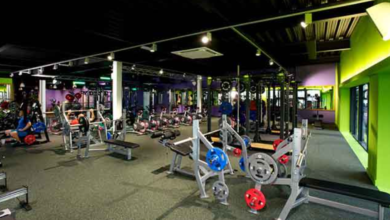The Role of Retail Displays in Enhancing Customer Experience and Sales

Displays in a store have a major role in marketing and capturing the customers attention. As for B2B businesses, putting money in good retail display solutions can increase product awareness, store design, and shopping experience. The appropriate retail display transforms the way businesses talk and sell to their customers via digital signage, interactive display screens, and even shelf displays. Every retail display carries a message that goes beyond branding, and such displays are used to influence purchasing behavior which ensures that retailers earn more and enjoy a rich shopping experience.
Zhsunyco specializes in advanced digital display solutions https://www.zhsunyco.com/de/product-category/digital-display-solution-for-small-retail-business/ by providing appealing content and supporting technologies aimed at small retail businesses.
What is a Retail Display?
A retail display is an arrangement of merchandise, graphics, and technology aimed at gaining customer interest and sales. This can be done using customized digital signage, interactive kiosks, shelf talkers, or even end cap displays. The ultimate goal of retail display advertising is to produce a pleasing display that people would want to see, which ideally leads to increased sales while also reminding them of the brand.
As retail businesses embrace the latest technological evolutions, traditional retail stands to benefit from the advancements in digital technology offering businesses greater flexibility and dynamism in product presentation. With the ability to be remotely updated, integrated with e-commerce systems, and customized based on customer behavior, digital retail display systems are a game changer for modern retail businesses. Using data analytics and Artificial Intelligence, businesses can ensure that display content is optimized in a manner that the right audience is reached at the right time with the right promotions.
See also: Available Businesses for Sale in Nashville’s Growing Market
Benefits of Retail Displays for B2B Companies
Although retail displays may appear to serve a single purpose, they actually offer many benefits especially for B2B retailers. One of the prominent advantages is customer engagement. Well designed appealing and strategically placed displays of products increase engagement as shoppers are more likely to spend attention on the products leading to higher chances of sale. Digital displays also give businesses the ability to promote their products, and display customer testimonials in an appealing way accompanied with their product details.
Emphasized brand visibility and consistency is another strong advantage. Great retail displays are a means of reinforcing brand messaging and well designed retail displays help businesses increase visibility across multiple locations. This is ideal for franchises, wholesalers, and suppliers seeking to help establish a unified brand identity across various retail environments.
Retail displays serve another important function in sales optimization. Customers tend to buy more spontaneously when items are well-arranged. High-margin products, seasonal offers, and promotions are often made more visible through eye-catching signage, digital shelf labels, and endcap displays which helps in increasing the sales figures.
In addition, well-planned retail displays greatly improve space efficiency. Companies can achieve an ordered shopping experience and better facilitate customer access by optimizing traffic flow, shelf space, and product placement within the store. To enhance product presentation and customer experience, Zhsunyco’s digital retail displays offer businesses new and innovative solutions.
Applications and Types of Retail Displays
Influencing customer behavior and optimizing the store layout can be achieved with varying types and forms of retail displays. One of the most well-known and used types is digital signage where businesses can offer new promotions, arrivals, or even interact with consumers in real time. The screens can be mounted on entrances, checkout counters, or on the walls of high-traffic areas to provide maximum exposure to the customers.
Endcap displays focus on featured items or limited time offers and are placed at the end of aisles. In grocery stores, convenience stores, and electronics retailers, customers tend to move towards the end of the aisles, making these displays effective.
Clients can virtually try on products or checkout themselves with interactive kiosks. These displays are often found in beauty, electronics, and apparel stores where clients can access products and processes for inquiry and pricing through a digital interface.
ESLs are used in conjunction with digital shelf displays to update prices, provide relevant information, and track stock in real-time. Automated pricing updates reduce pricing inaccuracies and increase operational productivity.
Developing the architecture of stores can improve customer attraction, especially with implementing efficient windows displays. This type of display acts as a marketing tool with the capability of captivating a client’s attention to the store. To further enhance their effectiveness, businesses can use motion sensors and artificial intelligence to change the displayed message according to the time of the day or type of customers.
Implementing Effective Retail Displays – Best Practices
To guarantee efficiency in retail displays, businesses should incorporate appropriate design and placement alongside the use of relevant technological tools. The first step is to determine customer tendencies and spot areas within the store that will carry the displays identified. Retail displays are best located at high traffic zones, checkout counters as well as promotional and advertising sections.
Customer engagement is greatly enhanced through the blending of digital and physical components. While traditional displays allow for proactive contact, screens offer ready-to-go information and up-to-the-minute updates. Interactive components such as hands-on touch screen monitors, QR codes, or NFC technology should be embraced for deeper engagement experiences.
It is extremely important to keep information relevant so as to maintain customer interest. Businesses are encouraged to change display promotions, seasonal advertisements, and trending merchandise frequently. This process becomes efficient with the use of automated scheduling accompanied by AI driven content management systems.
Maximizing the effectiveness of lighting and display placement will yield optimal results. Attention-grabbing and striking displays will capture the interest of customers and make products easily accessible. Placement should be strategic to make it easier for customers to move around the store without creating clutter in the store layout.
Adjustment of analytics and comparisons to the data is necessary for improvement. Businesses today are able to analyze customer interactions, sales conversions, and time spent to measure the impacts of different display techniques in retail. Digital providers can apply AI content analytics and improve the techniques of content delivery and placement.
Conclusion
B2B companies aiming to improve customer’s journey and sales performance while enhancing brand image can do so by harnessing retail displays for their business purposes. Innovative display solutions can include digital signs to interactive kiosks and shelf displays, allowing for creative environments while enhancing efficiency. Strategically placing retail displays not only pulls in customers, but also encourages them to engage more with the brand.
For advanced retail display solutions, Zhsunyco provides digital displays that are tailored to small retail shops and help increase customer interaction within the store. The retail environment is continually shifting, which makes it vital for companies wanting to stay ahead of the competition and modernize their systems to adopt and invest in new display technologies. There are rising prospects of such formats of retail display, incorporated with automation and artificial intelligence, which assure smooth transition alongside dynamic algorithms and expectations of consumers: lower expenses, higher dependability and more individual approach to customer service.




